Severe and thus protracted sports injuries also put a strain on the psyche of those affected. Experts complain that sports psychological care for the injured is still not the norm.
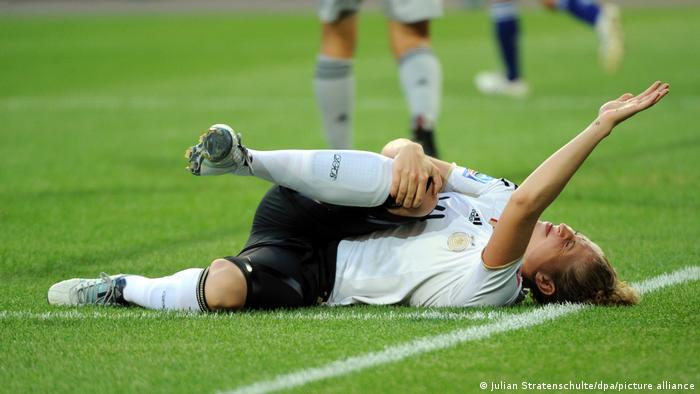
Kim Kulig tore his cruciate ligament at the 2011 World Cup – the beginning of a long story of suffering
“I was sometimes obnoxious,” former soccer player Kim Kulig recalled in an interview with DW. “The worst thing was that I didn't have the football that I loved so much. I enjoyed going to training every day, seeing my team-mates and just having a good time. And that suddenly went away. Suddenly I couldn't work in a team anymore, I was on my own and had to start from scratch.”
In the quarter-finals of the 2011 home World Cup against Japan, Kulig, who was considered a rising star in German football at the time, twisted her knee. The result: cruciate ligament rupture, months of rehabilitation. But that was just the beginning of her ordeal. Three more knee injuries followed within the next four years. In 2015, Kulig finally threw in the towel and ended her career – at just 25 years old, as a sports invalid.
The months of rehab were mentally very stressful, says Kulig, who now works as an assistant trainer for the “wolves”, the series champion and Bundesliga leader VfL Wolfsburg. At the time, she had to deal with her impatience , says the 32-year-old: “I was used to a high level of training. It was like an addiction to always push yourself to the limit. And then you suddenly get slowed down and have to learn to make little progress at best.”
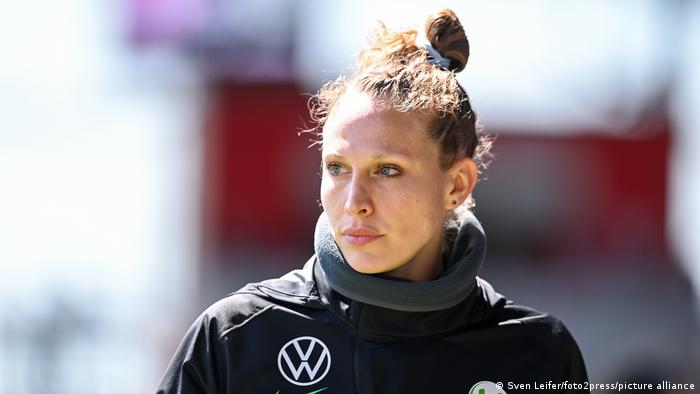
Kim Kulig didn't have a sports psychologist when she was injured: “I made it up to myself”
The footballer did not receive psychological support during rehabilitation, but she did not actively take care of it either. “I settled the whole thing with myself and with my family at the time,” says Kulig. “I didn't choose to go to a psychologist. Looking back, it wasn't the right decision.”
One month's absence per Bundesliga season
If you look at the statistics, every soccer player is well advised to prepare for injuries, even serious ones. The administrative professional association (VBG) publishes an annual sports report on the number and severity of injuries in the two highest German men's leagues in the major team sports of football, handball, basketball and ice hockey. According to the last VBG report for 2021, the risk of injury was highest in football: on average, every professional in the 1st and 2nd Bundesliga suffered 2.5 injuries in a season. Four out of five players were affected, and the days missed added up to an average of 31 per player. A good 30 percent of downtime was due to knee injuries.
Anyone who – like Kulig back then or currently national player Giulia Gwinn – has to struggle through months of rehabilitation because of a cruciate ligament tear will probably also have to go through a few mental troughs. “It is quite possible that long-term injuries also have psychological consequences: insecurities, possibly also depressive phases if the healing process does not go as expected,” says Michael Kellmann, who, as a professor at the Ruhr University in Bochum, is responsible for the teaching and heads the sports psychology research department.
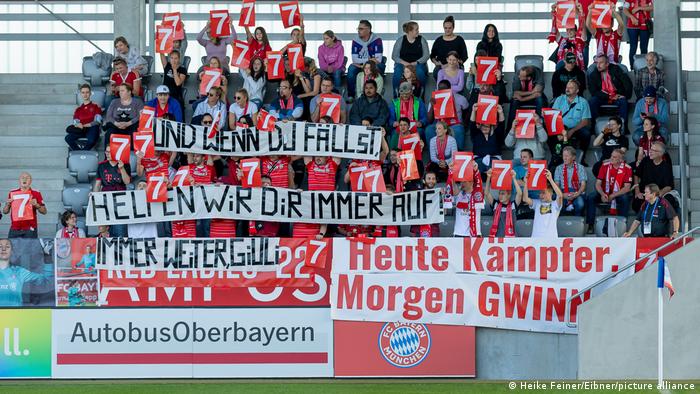
Bayern fans wish Giulia Gwinn a speedy recovery after her second cruciate ligament rupture
Numerous studies show that mental support is helpful during an injury. “But there aren't sports psychologists in every structure,” says Kellmann. “And if there are any, they might be used for performance optimization rather than injury management.”
A survey of North American sports medicine professionals who treat cruciate ligament injuries, released last October, found that 95 percent of respondents rated psychological testing as at least “fairly important” during rehabilitation. However, only 35 percent of them use these tests routinely. Where does this discrepancy between theory and practice come from?
Setbacks tend to be the rule
“Because it is in clubs that savings are most likely to be made in the position of sports psychologists,” says Miriam Kohlhaas. The 39-year-old from near Düsseldorf has been supporting the German national American football team on psychological issues since last year: “For me, a sports psychologist belongs on the coaching staff of a professional team. Mental training should be as natural as athletic or Strength training. And in the best case, preventive work is done with the individual athletes.”
Kohlhaas thinks that the athletes should deal with possible injuries even before the season begins: “What is the worst that can happen, how do I want to react to it? Who do I contact? How can I take countermeasures when I know that I'm probably going crazy at the moment?”
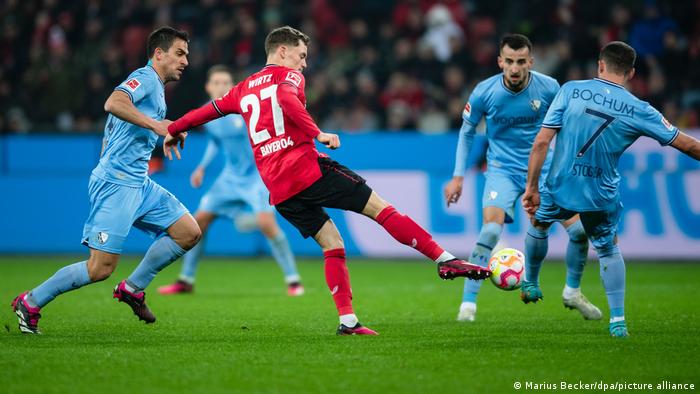
Leverkusen's young star Florian Wirtz (2nd from left) was out for almost nine months due to a cruciate ligament rupture
After the shock of the injury, there may be an even greater psychological burden during the subsequent long rehabilitation period. “A prognosis remains a prognosis and is not a promise that a player will be able to play again six months after the cruciate ligament tear,” says Michael Kellmann. “Relapses are more the rule than the exception. And then psychology comes into play again: Are the athletes and the coaches prepared for something like this to happen? Especially when top performers drop out, there is speculation that they will be reinstated as soon as possible can.”
According to the scientist, in recent years the focus has increasingly been on a careful training structure and a slow introduction to the game. “But if it's about relegation or relegation in the last Bundesliga game, that might take a back seat.”
Wrong movement out of fear
During rehab is a “realistic assessment of the situation “Extremely important, says Kellmann. Otherwise, from the point of view of the athletes, there is a risk of not finding the right balance. Some want too much too quickly and thus overload their ailing body. The others develop a fear of more serious injuries.
The latter could end badly in the contact sport of American football, for example, says Miriam Kohlhaas. Only if a professional has full confidence in those parts of the body that were injured will he be able to get the trained contacts clean again: “If I turn my knee out to the side for fear of another injury, my shoulder may be wrong. And then the next one is Injury almost inevitable.”
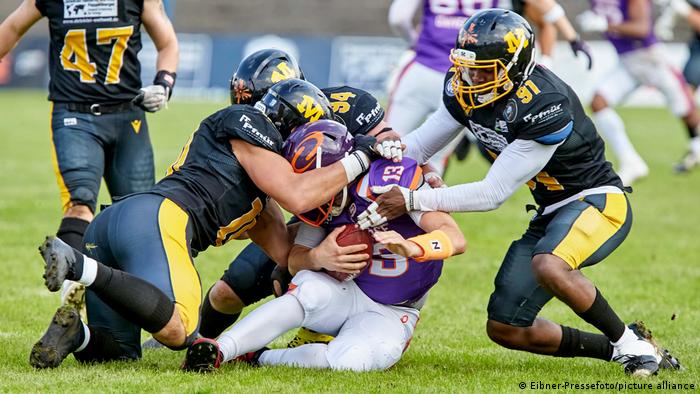
Careful, half strength? – Impossible in contact sport American Football
Michael Kellmann points out that even athletes whose clubs do not routinely work with sports psychologists can get mental support – not only in the event of an injury, but with all psychological problems. For example, there are the “MentalTalent” initiatives for young athletes and “MentalGestärkt” for those active in competitive sports. Contacts to experts would be arranged there.
Seeing an opportunity in the injury
Kim Kulig's team at VfL Wolfsburg works closely with a sports psychologist. “It should be like that everywhere,” says the assistant trainer.
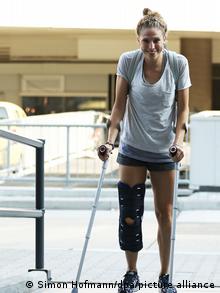
Kulig in front of her fourth knee -Surgery in 2013
After all, it's not just about psychological support during injuries, but also about developing the players as personalities. “We all know that things don't always go uphill. You also have to be able to deal with setbacks.”
Her personal injury history helps Kulig today in dealing with injured players. “I couldn't accept my fate for a long time back then,” says the trainer. “Today I'm giving the players a piece of advice: Accept it quickly, you can't change it. You have to set small goals for yourself, then you'll be back with the team quickly.”
Even a lengthy rehab also have positive sides. “You deal with your body every day, work on muscle building, mobility and coordination. After that you are an even better athlete.” And that with a mature personality, Kulig adds: “You become more relaxed and you get to know yourself a lot better as a person. My four years of suffering were a total challenge for me, but in retrospect they also gave me a lot of strength.”

